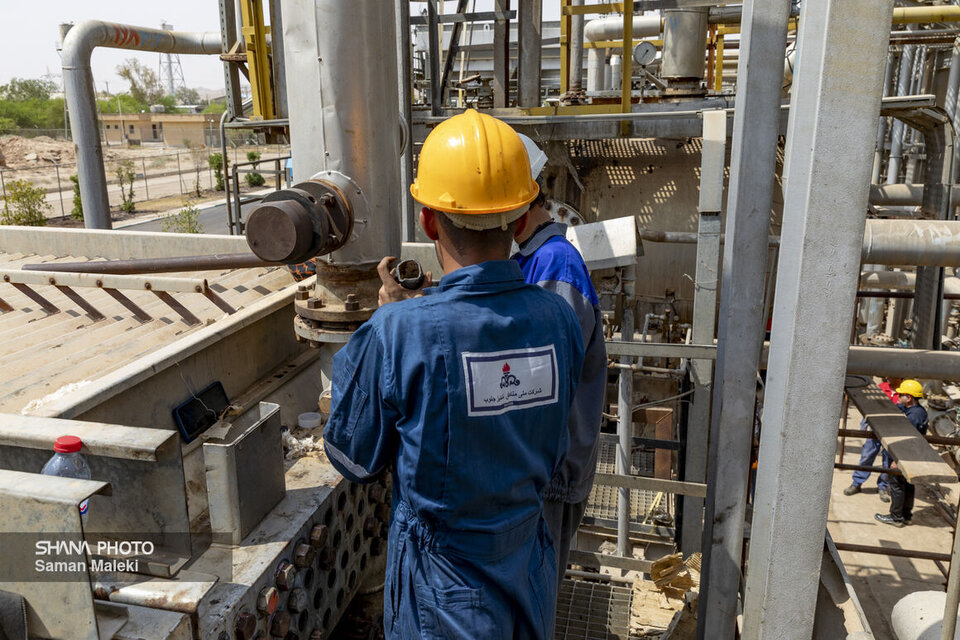Five units have already been completed, and the rest are progressing at what officials call an appropriate pace.
Comprehensive maintenance, known in the industry as overhauling, is considered a cornerstone of production stability in Iran’s oil sector — particularly at NISOC, which produces more than 85% of the country’s crude. With aging infrastructure, sanctions-related supply constraints, and the need to preserve output capacity, the company has intensified preventive and scheduled maintenance programs in recent years.
“The slightest production drop — even for a moment — can have far-reaching consequences for the nation’s energy supply, economy, and exports,” said Omid Kiani, the company’s maintenance chief.
From a total of about 300 process units slated for overhaul in the current Iranian year, work has started on more than 100, including preheaters, electrostatic desalters, hydrogen sulfide removal towers, and coalescer tanks. Summer is considered the optimal season for overhauls in the south, where hot weather spans about seven months a year, allowing 60% to 70% of annual work to be concentrated in that period.
Overhauls cover fixed process equipment and heavy-duty machinery above 4,000 horsepower, including turbines, compressors, pumps, and high-voltage motors. Heavy equipment is repaired under direct supervision of the maintenance department, while lighter machinery is handled by operating companies.
NISOC operates one of the largest process machinery fleets in the Middle East, including decades-old Rolls-Royce, Solar and GE turbines, Sulzer compressors, and Dutch-made units. Despite sanctions, in-house specialists have kept them operational.
In the first six months of the year, 12 gas compression stations and gas and LPG plants were assigned for overhaul, with seven already completed — four ahead of schedule. These efforts, officials say, have reduced gas flaring, improved environmental performance, and boosted efficiency.
The company has also adopted new techniques, such as rope access and mobile structures, to replace traditional scaffolding inside large tanks, cutting preparation time from months to weeks.
Some projects have moved beyond maintenance into full reconstruction, including the restoration of turbines with more than 200,000 operating hours — well beyond the manufacturer’s recommended limit.
NISOC also champions domestic manufacturing, collaborating with knowledge-based firms to produce turbine blades with specialized coatings.
Given the limited supply of qualified turbine technicians — training takes three to five years — the company stresses workforce development. The closure of several vocational schools in the past, Kiani said, was a setback for the industry.
Despite resource constraints, NISOC maintains strict safety protocols, reporting no fatalities in overhaul projects last year. The company pairs veteran supervisors with younger engineers to ensure skills are passed on, while also offering incentives to keep morale high.
“Our greatest asset is motivated, skilled people,” Kiani said. “That’s what ensures the quality and continuity of these operations.”


Your Comment